This post may contain affiliate links. Please read my disclaimer.
Every Christmas, cooking for my family is always a big project to me, curating the menu, buying the ingredients and planning when to cook what. I have a table full of my beloved family whom I do not wish to disappoint. The joy of seeing my whole family enjoying the meal and each other’s company is all worth the time and effort. A must-have centrepiece on our Christmas table has got to be the turkey. I used to buy pre-cooked turkey and roast it in the oven, but it always turned out dry and tasteless. Until I started roasting our own turkey recipe, I find it actually really easy and fuss-free.
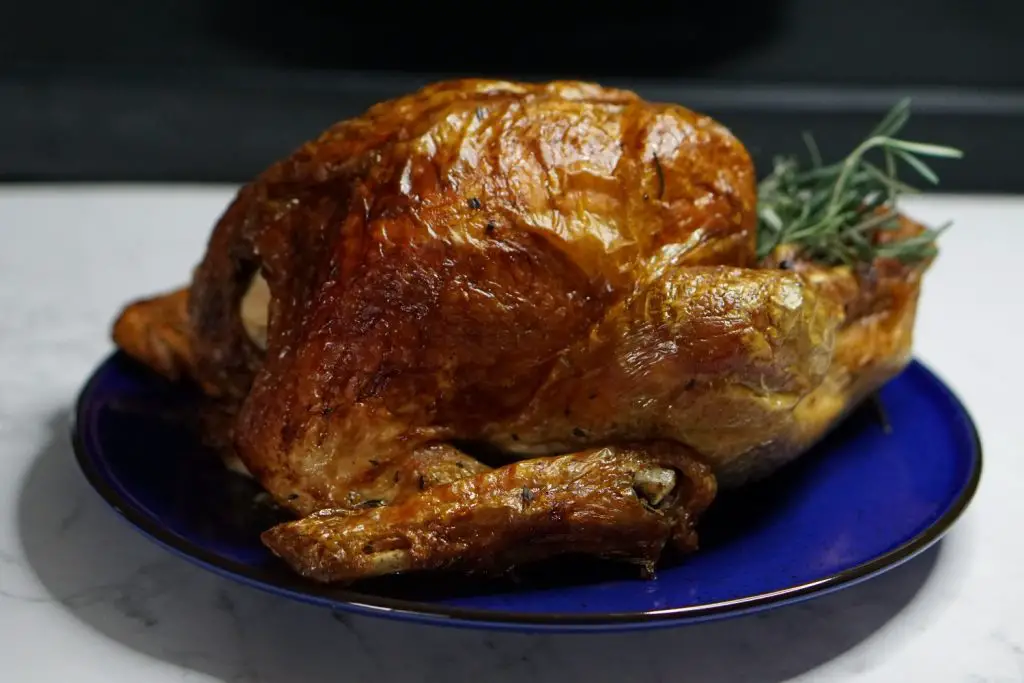
I must say handling this big bird can actually be quite daunting at first, I mean I’m not a big meat eater and do not always get to handle a large piece of raw meat. Luckily I had my mummy dearest to help me with the process. There are many turkey recipes out there that describe how to best prepare a turkey. There is a lot of emphasis on thawing, roasting times and temperature, cooking the stuffing and gravy, brining and basting the turkey. Here is my list of dos and don’ts of my turkey recipe, to remind myself when I cook the turkey again for next time, and I hope you will find it useful too.
Dos and don’ts of my turkey recipe
- Don’t wash the turkey. There are countless articles out there telling you why you should never wash the meat, as the risk of contaminating your sink is real. The Butterball turkey I bought looks really clean. When removed from the plastic packaging, I really just need to thoroughly drain off the water, there’s a lot of water from the melted ice. Then just pat it dry with some paper towels. According to the USDA, any bacteria on the turkey will be killed in the hot oven while it roasts.
- Don’t need to baste the turkey. Basting is really not necessary to produce a beautiful golden brown roast turkey. The basting process requires you to constantly open the oven, which causes the oven to lose heat leading to a longer roasting time for the turkey and potentially a dry turkey too. By smearing the herb butter over the turkey, it came out beautifully brown and roasted.
- Don’t open the oven door frequently to check the turkey. It’s not necessary, unless your oven does not come with a see through window. For the same reason mentioned in the above point, you do not want to lose heat opening the door often, which results in a longer cooking time and a dry turkey.
- Don’t need to brine the turkey. I didn’t do this step in this turkey recipe and my turkey came out juicy and flavourful. I was told a high quality turkey from brands such as Butterball does not require brining. Go ahead to do it if you want but I find it unnecessary.
- Don’t need an expensive roasting pan. I bought my roasting pan that comes with a roasting rack. You can also use a disposable foil roasting pan and it works the same, but a disposable ones does not come with a rack so you can use some chopped vegetables as the base by placing it below the turkey.
- Don’t need to cover the turkey with aluminium foil. My turkey came out perfectly browned and crispy without the aluminium foil.
- Don’t cook the stuffing inside the turkey. Simply stuff ingredients that give the turkey flavour, such as salt and pepper, fruit (lemons, oranges, apples), vegetables (celery, carrots), aromatics (garlic, onions) and fresh herbs (sage, thyme, rosemary, parsley). The turkey will come out very tasty and you get a full flavoured dripping that does not require additional seasoning.
- Don’t cover the cooked turkey with clingwrap (a mistake I did before) after cooking as it traps the moisture of the turkey and the crispy cooked skin loses its lustre and crispiness.
- Don’t follow the recommended roasting time blindly. My 5.15kg (11.35lbs) turkey requires a roasting time of about 2 hours 45 minutes based on the calculation of 13 minutes per pound for an unstuffed turkey, roasting at 175 degree celsius (about 350 degree farenheits). At the end of the second hour, the internal temperature of my turkey breast reached 85 degree celsius, above the recommended 74 degree celsius (165 degree farenheits). Nevertheless, the breast meat portion came out perfectly moist and slightly pink. Now this is just perfect. This leads to the next point.
- Do monitor the turkey with a meat thermometer. The only way to really tell if the turkey is cooked is by using a thermometer, and the right internal temperature of the thickest part of the turkey breast meat (without touching the bone) at 74 degree celsius (165 degree farenheits) OR turkey thigh at 82 degree celsius (180 degree farenheits). Test the turkey right from the oven. Do note that the Butterball website recommends that the temperature in the breast should reach 76 degree celsius (170 degree farenheits) for the best eating experience. When the thigh muscle is pierced deeply with a fork, juices should be clear and not reddish pink. Once it reaches that temperature, take it out from the oven to avoid further drying out the turkey. The cooking time is dependent on the temperature of the turkey when it enters the oven as well as the nature of your oven. It is recommended you check the turkey with the meat thermometer 30-60 minutes before the estimated finish time.
- Do remove the neck (usually found in the large cavity of the turkey) and the bag of giblets (usually found in the smaller neck cavity of the turkey). The giblets are actually the kidney and liver of the turkey. My mother told me not to discard them. Remove the giblets from the paper packaging, rub the neck and giblets with some salt, roast them together on the roasting pan next to the turkey for about 45 minutes to an hour. It’s good to eat it just like that.
- Do complete cooking it an hour before you serve. This way you do not have to reheat the turkey that might turn out drier and food is always best served when just cooked. However let it rest for about 15-30 minutes before carving it.
- Do thaw the turkey properly. According to Butterball turkey website, the best practices are to thaw turkey breast side up, in an unopened wrapper on a tray (to catch any liquid as the turkey thaws) in the fridge at below 4 degree celsius or 40 degrees farenheits. Allow at least 1 day of thawing for every 4 lbs of turkey. Note: I thawed my turkey in my wine fridge at 8 degree celsius unopened for 4 days, then 2 hours on my kitchen counter for the thawed turkey to reach room temperature before opening the packaging and starting the preparation work. Never thaw a turkey on a counter or in hot water.
- Do pre heat the oven to the right temperature before placing the turkey in.
- Do let the turkey rest after roasting. After removing the turkey from the oven, let it rest for at least 15-30 minutes.
- Do add aromatics, fruits or vegetables and 2-3 cups of water to the base of the roasting pan. I added the remaining unused apples, garlic, onion and fresh herbs. The drippings was amazingly flavourful! However do keep a watchout to the water, if it dries out, add more water to the base.
- Do save the drippings for gravy. The drippings is so full of flavour you do not need to add any seasoning. After removing the turkey from the roasting pan, scrape the browned cooking bits and sauce at the bottom of the roasting pan. I mashed the cooked bits through a sieve to extract the essence of it. The drippings will have quite a lot of oil so I left it aside for the oil to surface up and scoop the oil out as much as possible, leave the oil aside for other cooking. Then, heat up 1 tbsp of butter in a small sauce pan, add the remaining gravy, once boiled, add some cooking cream to give it some texture, then a flour mixture (1 tbsp all purpose flour mixed with 2 tbsp water) to thicken the sauce.
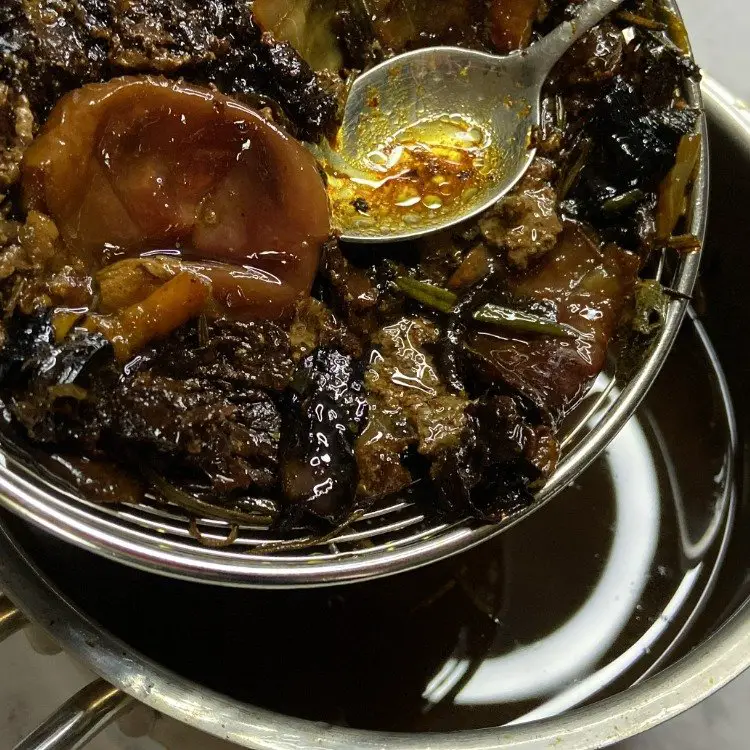
Watch my turkey recipe video
How long should I thaw the turkey?
Butterball recommends the approximate thawing time in the refrigerator:
- 4.5-8kg (10-18lbs) : 3-4 days
- 8-10kg (18-22lbs) : 4-5 days
- 10-11kg (22-24lbs) : 5-6 days
- 11-13.6kg (24-30lbs) : 6-7 days
They also provided a calculator to check the perfect thawing time.
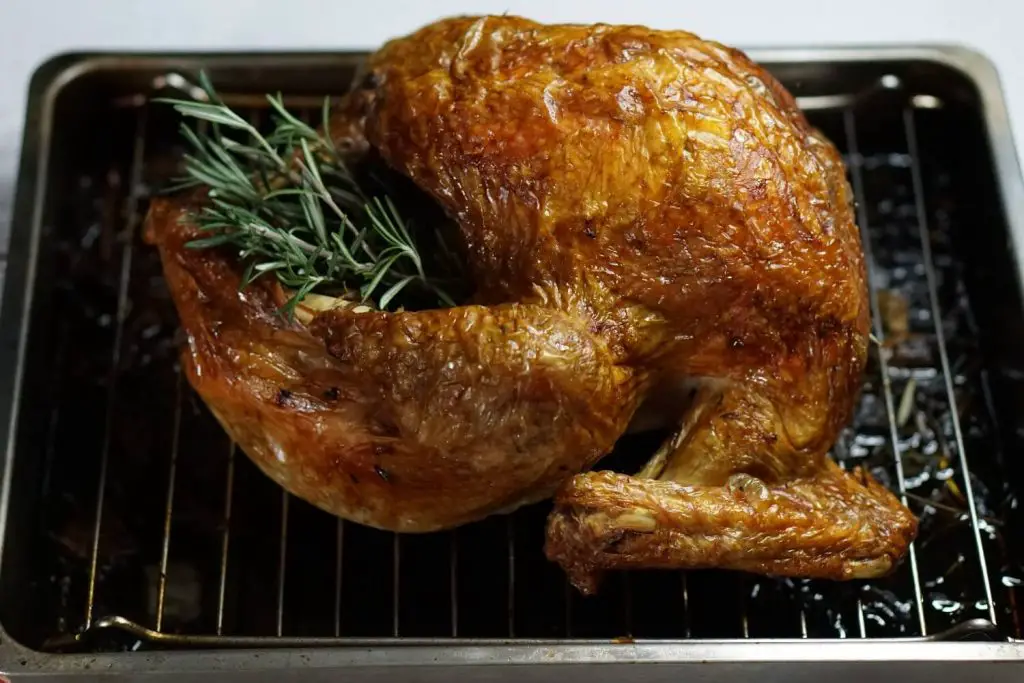
What can I put in my turkey for flavour?
My turkey recipe uses seasonings (salt and pepper), quartered or halved fruits (lemons, oranges, apples), chopped vegetables (celery, carrots), chopped aromatics (garlic, onions) and fresh herbs (sage, thyme, rosemary, parsley). The result was amazing! Add water to the bottom of the roasting pan so you can use it as gravy later, and take a look out to add more water if it dries out during roasting. Some recipes call for adding broth but it’s totally unnecessary.
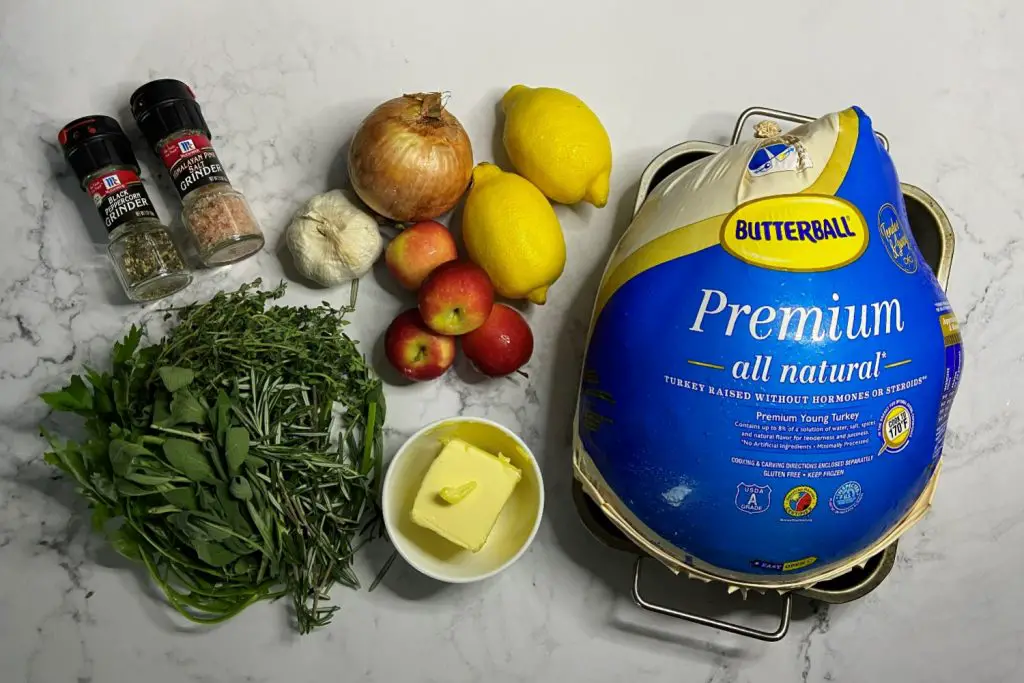
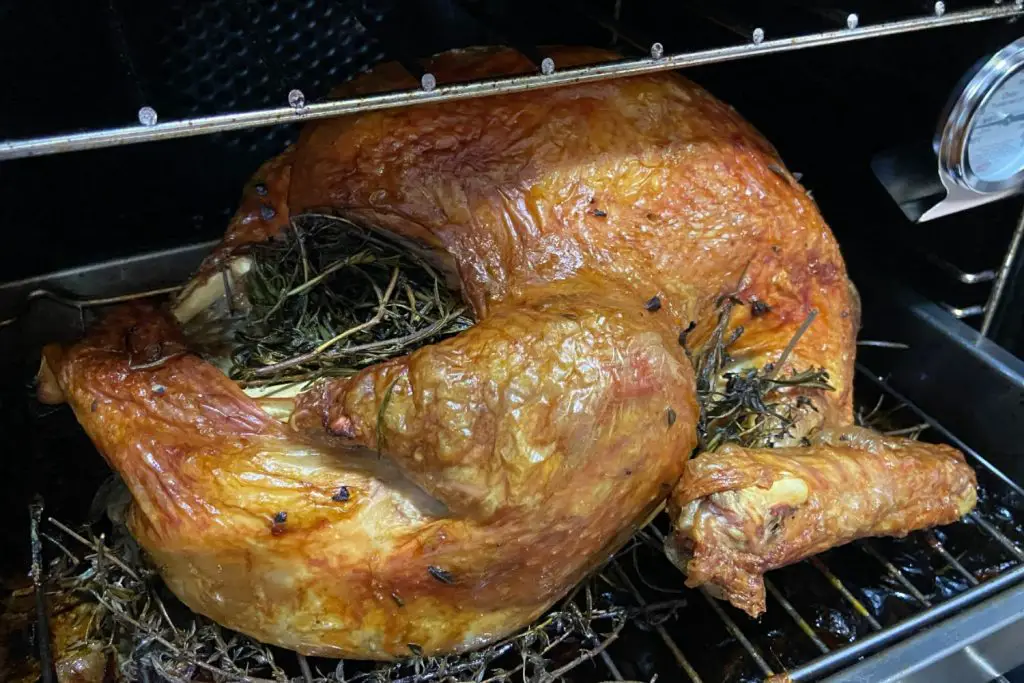
What size turkey to buy for this turkey recipe?
I bought the smallest available turkey (frozen at 5.15kg) and we had quite some leftovers. You can use this calculator to estimate the size of turkey you should buy for party. I find it rather accurate and very useful.
Side dishes to go with the turkey recipe
- Gorgeous crispy potato roses – These pretty little potato roses will complement the roast turkey perfectly as another beautiful centrepiece of the table.
- Avocado & beetroot salad with feta cheese, fresh greens, egg and almond – My all-time favourite salad that contains every nutritious ingredients you can have in a bowl.
What to do with leftover turkey?
Leftover turkey should be refrigerated within 2 hours after heating. It can be kept in the fridge in an airtight container for up to four days, or the freezer for up to six months. I’m already thinking of making a turkey shepherd pie, turkey spring roll, turkey curry, and turkey croquette. My mummy also taught me to keep the bones to make broth.
Simple Turkey Recipe | Perfectly Juicy Turkey
Ingredients
- 5.15 kg turkey thawed
- 200 g butter melted
- Salt seasoned to taste
- Black pepper seasoned to taste
- 1 head garlic
- 1 big onion
- 30 g fresh rosemary
- 30 g fresh thyme
- 30 g fresh parsley
- 30 g fresh sage
- 1-2 lemon wash and quartered
- 1-2 big apple washed and cored
- 2-4 cups water
Instructions
- Thaw turkey completely in the fridge, unwrapped. Allow 1 day for every 1.6kg / 4lbs of turkey. Give an extra day to completely thaw. Remove from fridge 2 hours to allow turkey to reach room temperature.5.15 kg turkey
- Drain the water from the turkey thoroughly. Pat dry the turkey all over with a paper towel.
- Remove neck (usually from large cavity), giblets (usually in a packaged from the small neck cavity), and feathers if any.
- Pre heat oven to 175 degree celsius.
- Wash and cut lemons and apples into quarters. Peel and chop big onion. Peel garlic. Mince 3-4 garlic cloves (for herb butter). Cut some rosemary leaves to make 1 tbsp (for herb butter).200 g butter, 1 head garlic, 1 big onion, 30 g fresh rosemary, 1-2 lemon, 1-2 big apple
- Melt butter. Add minced garlic, 1 tbsp cut rosemary leaves, salt and pepper and mix well to make the herb butter.Salt, Black pepper
- Place turkey on a roasting pan with a roasting rack. Liberally spread herb butter all over the turkey, above and below, and inside of cavity.
- Stuff the large cavity with cut lemons, apples, onion, garlic, rosemary, sage, thyme, and parsley. For the small neck cavity, stuff bunch of rosemary, sage, thyme, and parsley.30 g fresh thyme, 30 g fresh parsley, 30 g fresh sage, 30 g fresh rosemary
- Place remaining herb leaves in between the folds of the turkey wings and thighs, and under the turkey. Tuck wings under the turkey body.
- Add remaining apples, garlic and onion to the bottom of roasting pan. Note I didn't add lemon as I do not want to add the sourness to the drippings. Add 3 cups of water.2-4 cups water
- Roast the turkey at 175 degree celsius for 2 hours, breast side up. Monitor to ensure the skin doesn't get burnt and water at the bottom of the pan doesn't dry up. If the water dries up, add more water to the bottom of the pan.
- Use a meat thermometer to monitor the internal temperature of the turkey, insert the meat thermometer at the thickest part of the turkey at the breast, in the oven. The internal temperature should reach the recommended 74 degree celsius (165 degree farenheits).
- Remove roast turkey from the oven and let it rest for 15-30 minutes before carving.
To make turkey gravy
- Collect drippings and the cooked bits from the bottom of the roasting pan. Mash the cooked bits through a sieve. Leave the drippings aside and let the gravy subside and the oil surface. Remove the oil from the surface.
- Melt 1 tbsp butter in a saucepan. Add 2 cups of gravy from the drippings and let it simmer.
- Add 1/2 cup of cooking cream and let it simmer.
- Mix 1 tbsp of all purpose flour to 2 tbsp of water. Add the mixture to the gravy and let it simmer. Then remove from pan.

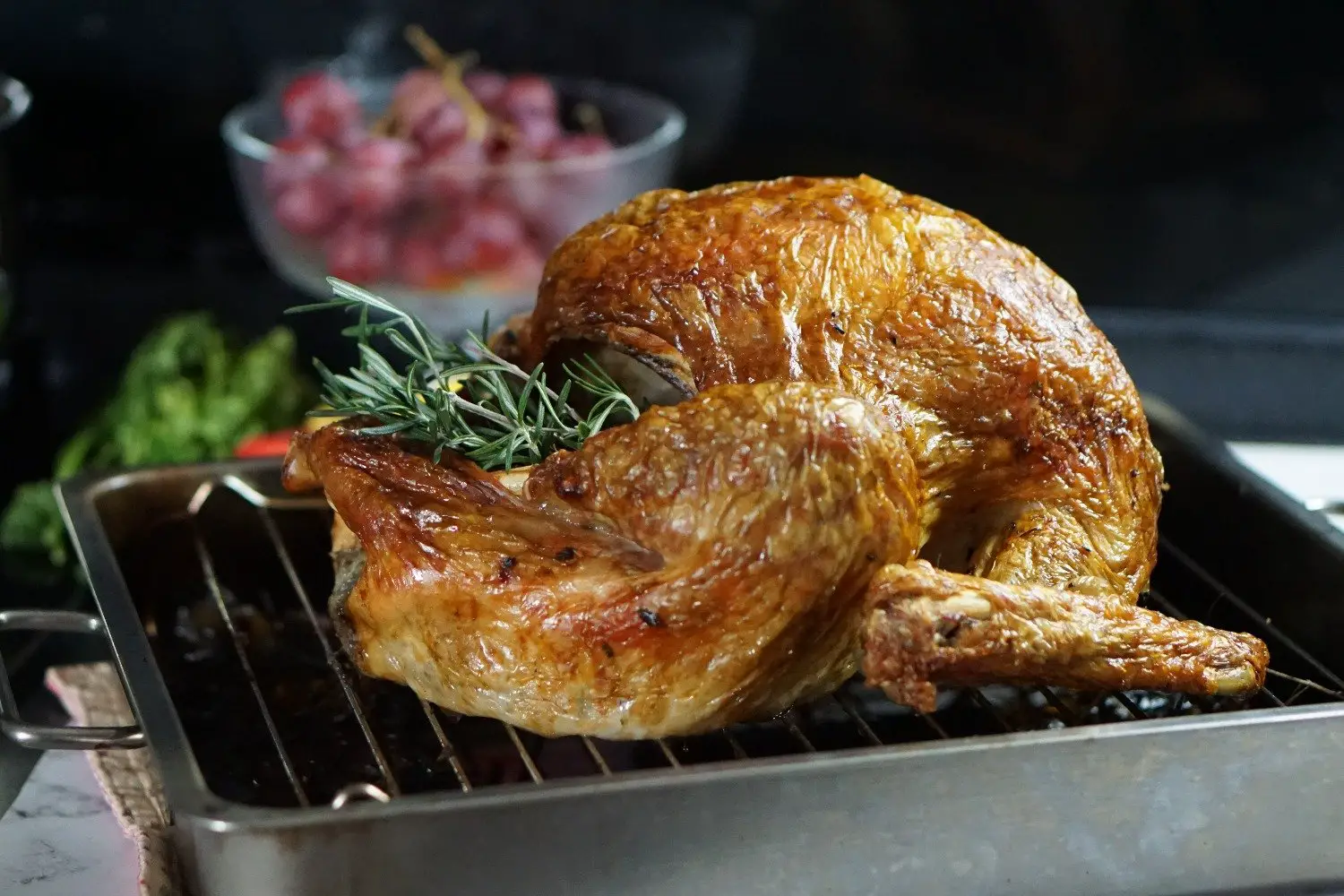
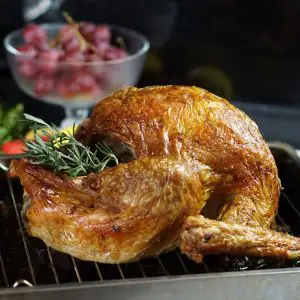
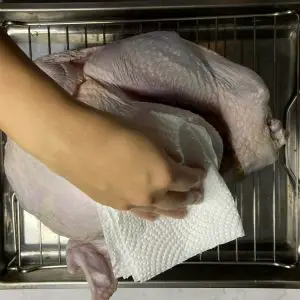
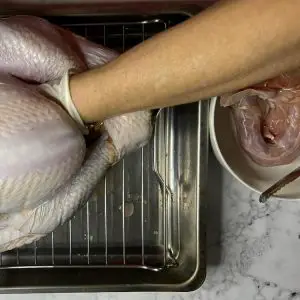
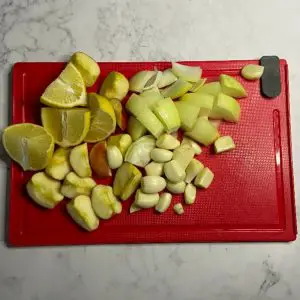
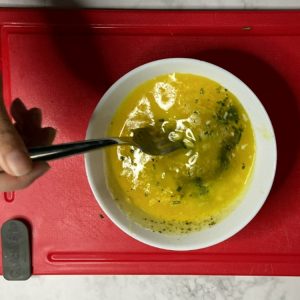
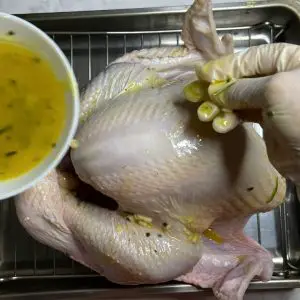
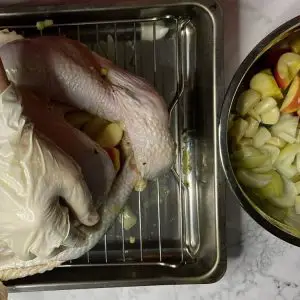
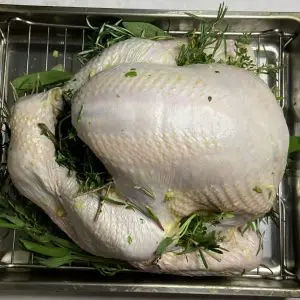
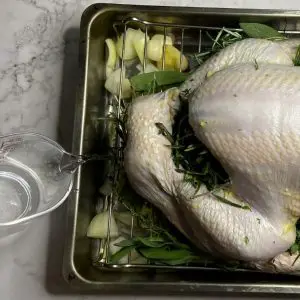
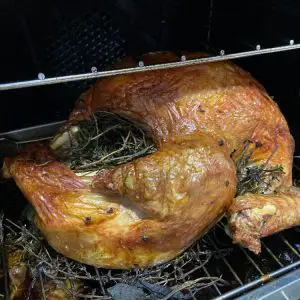
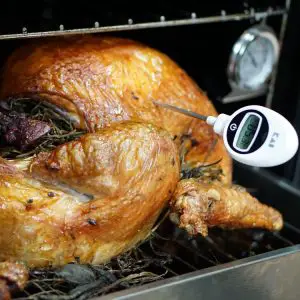
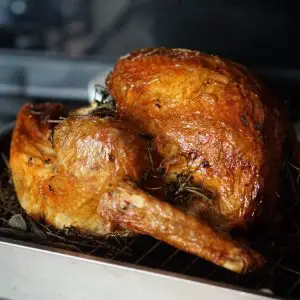
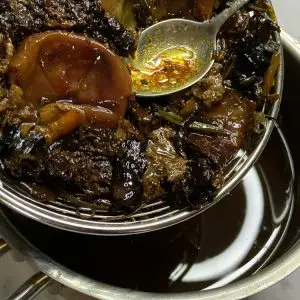
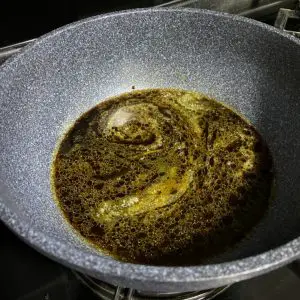
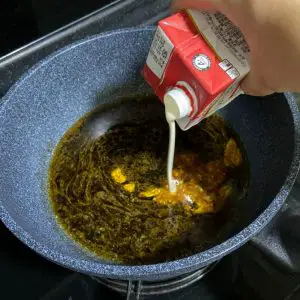
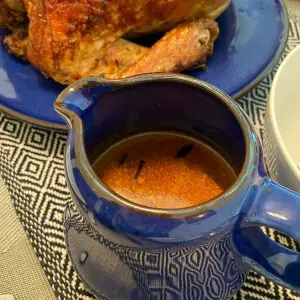
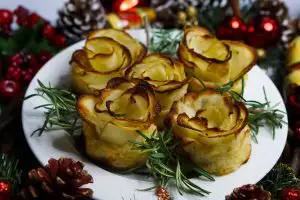 Crispy Potato Roses
Crispy Potato Roses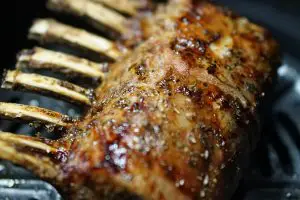 Air Fried Lamb Rack Recipe
Air Fried Lamb Rack Recipe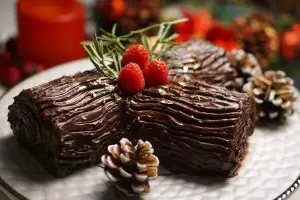



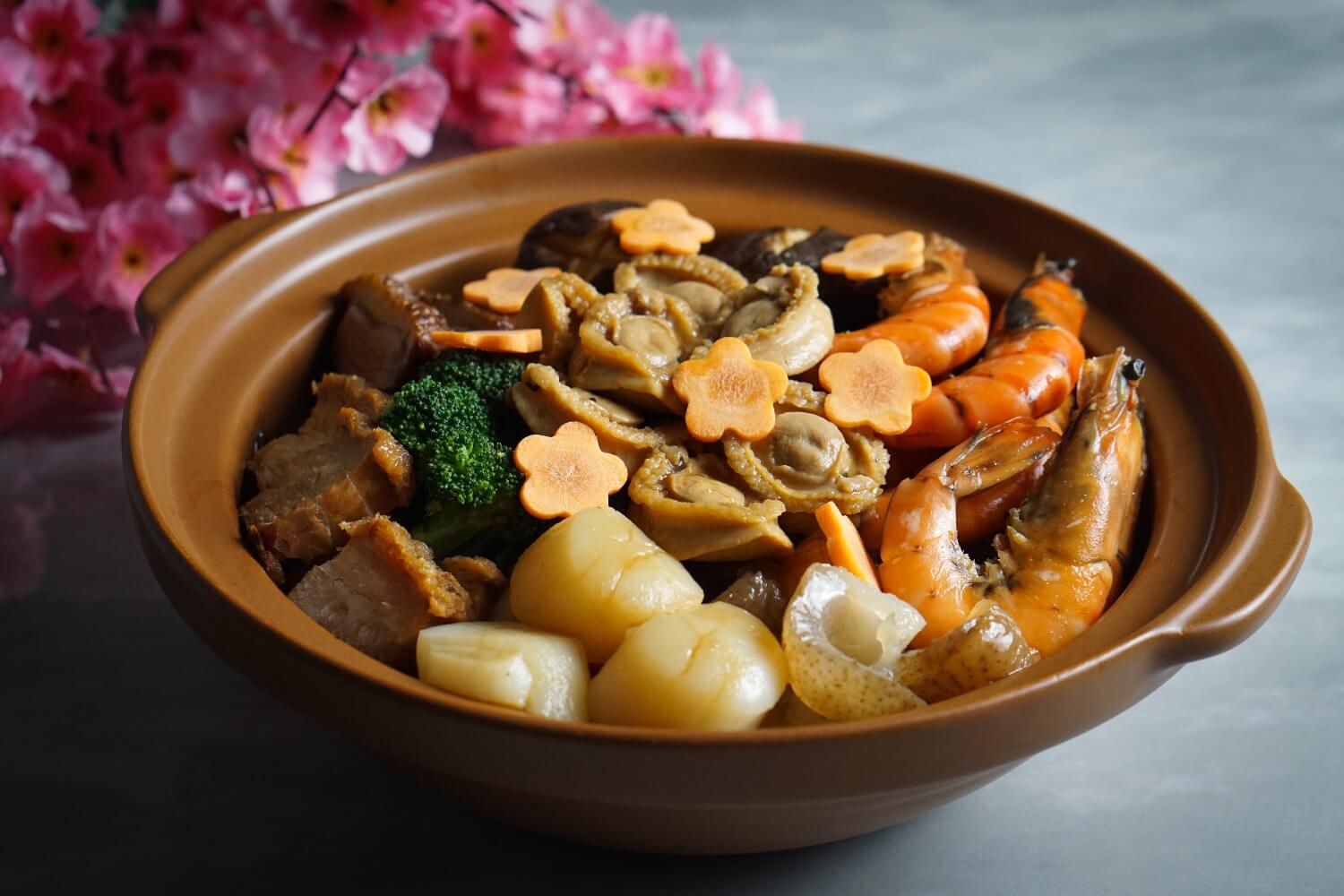
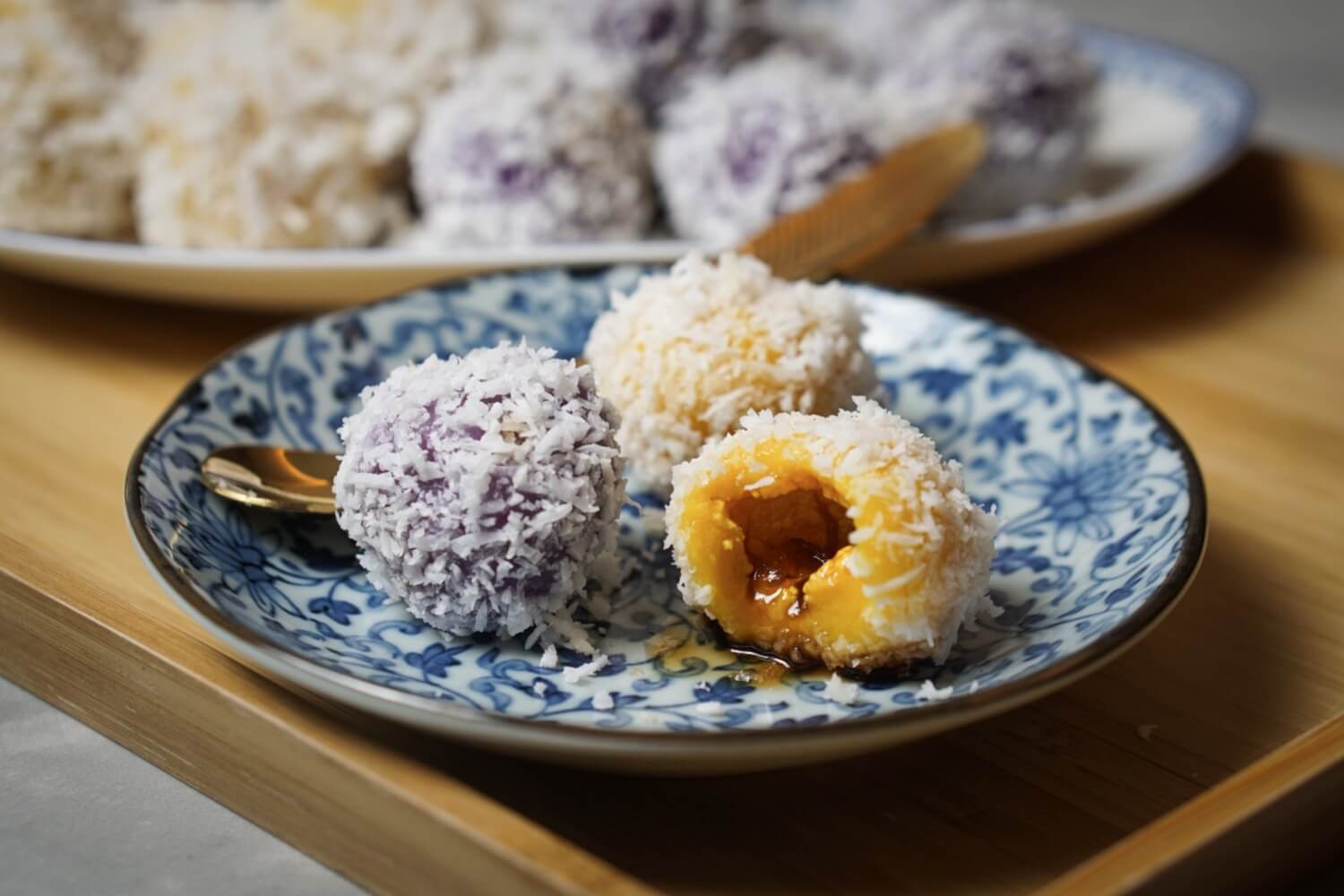
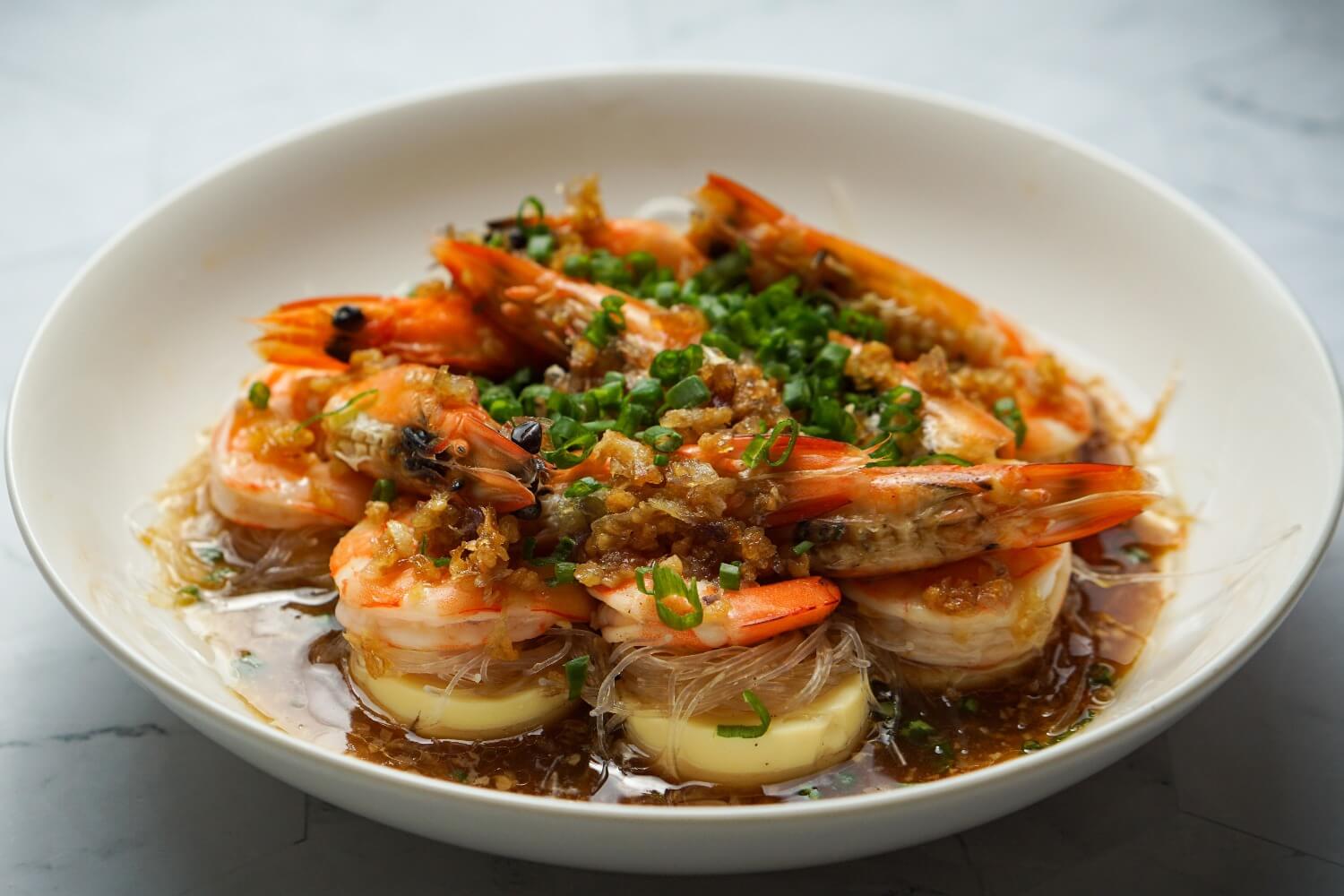



19 December 2021 at 3:24 pmDelicious & crispy skin
24 December 2021 at 9:21 amWow this plate open my mind